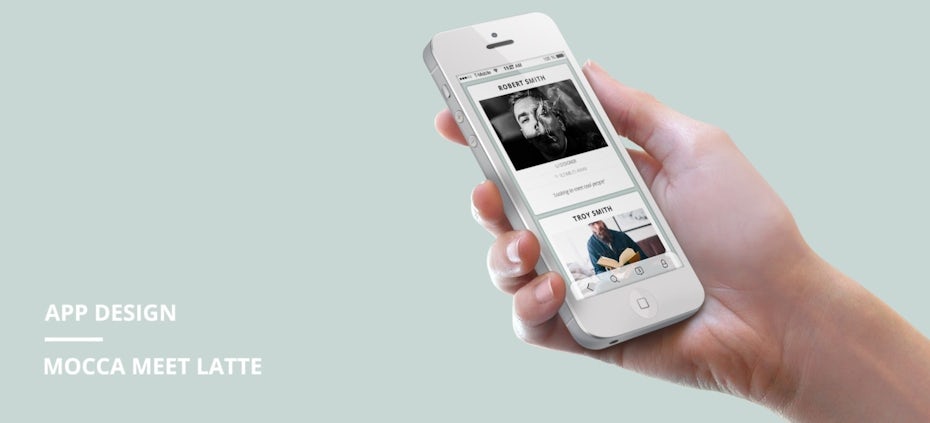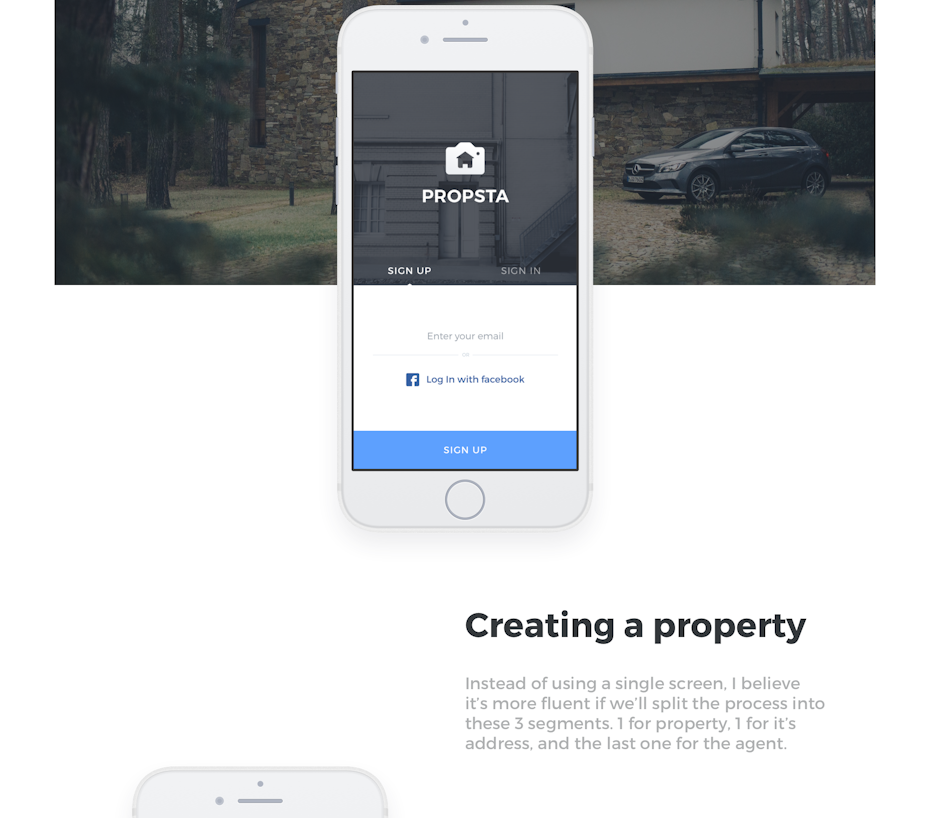User experience (UX) design is the process design teams use to create products that provide meaningful and relevant experiences to users. This involves the design of the entire process of acquiring and integrating the product, including aspects of branding, design, usability and function. You come across UX design principles whenever you use an app produced by a major company, or use one of their products. UX is also what makes a website easy and enjoyable to use.

As you start exploring the world of web design, you’ll pretty quickly come across the concept of User Experience (UX). UX design arguably started way back in 1988 with the publication of Donald Norman’s The Design of Everyday Things.
Norman, who at that time was the lead designer at Apple, used the book to draw attention to the complexity of the design of objects that are often overlooked. Since then, UX design has developed and changed and is now the pre-eminent way of thinking about user-led design.

Despite the popularity of the concept, however, the core principles of UX design are still little understood by many designers: there is, in fact, an ongoing debate about just how to define the term. Many designers have a vague understanding that UX design is about focusing on the user, but applying this principle in practice can be a little more complex.
Fear not. In this article, we’ll take you through the 7 most important UX design principles, and show you how to apply them.
1. Focus on the user
—
“Focus on the user” is the most important principle in UX design, and underpins all of the other principles we’ll be discussing in this article. This principle sits at the core of UX design because it helps to combat a very common issue found in website design: as designers become more adept at working with complex web design frameworks, they can end up designing sites that are more concerned with impressing fellow web designers than providing real-life users with a great experience.

Great design has always been about elegant combinations of form and function, and by integrating user experience into your web design at the earliest possible stage, you will end up with a site that is genuinely user-centric. Applying this principle involves thinking carefully about the way in which your users will actually interact with your site, and the most common tasks they will use it for, and keeping these key concerns in mind throughout the design process.
The most practical way to apply this principle for web designers will depend on the type (and size) of the organization you work for. If you have the luxury of a dedicated UX research team, this will involve working closely with your UX researchers. For smaller organizations, you may have to build your own user feedback mechanisms (more on that below). Whichever approach you take, though, user-centric design means that there should be a continual process of design and feedback, where each process informs the other.
2. Consistency
—
A more specific principle of UX design, and one that is extremely important when it comes to building a successful website, is consistency. At the broadest level, consistency means that designs and functionality stay the same across all of your pages and products. However, it’s also important to recognize that many of the most popular and successful apps and websites use similar templates for user interfaces, whether this is in the placement of buttons or the way in which menu systems “flow.”

For this reason, users will come to your site with a pre-existing idea of how things “should work,” and it’s important to respect this. While you shouldn’t replicate your competitors’ apps and websites, creating an interface that feels similar to market-leading websites can help your users to navigate your pages easily. This is because the more familiar your page looks, the easier it will be to use, and the more seamless your users’ experience will be. Research shows that users respond positively to pages that look familiar.
Implementing this principle should be approached through three techniques. The first is that you should consider all the ways in which your users interact with your site, and use the same design across all these systems. This means integrating your website design with your apps and your eCommerce store. The best web hosting providers will provide you with systems that will allow you to perform this kind of integration.
Secondly, you should resist the temptation to try new, crazy ideas. While innovation is important for web design, this should never get in the way of usability. Third, you can consider adopting a “design language” as a way of keeping your designs consistent: good examples of design languages include Apple’s Human Interface Guidelines and Google’s Material Design Guidelines.
3. Hierarchy
—
Hierarchy is another core principle of UX design, but one that is often forgotten. At the simplest level, a hierarchical approach to design means thinking through all of the functionality and information that your website will contain, and then mapping this into a tree-like structure in which every aspect of your website flows “naturally” from the last. If implemented effectively the pages of your website will flow so naturally from each other that your hierarchy will be all but invisible.

Adopting this approach at the earliest design stage provides you with many advantages. One is that it will allow your users to navigate your site more easily, and to find what they are looking for. It’s also important because it allows you, as a designer, to see exactly how your site works.
This can greatly simplify your task as a designer which means that you won’t be tempted to continually add new plugins and themes onto your site to achieve what can be done more easily with a logical design approach. As Dieter Rams put it in his Ten Principles for Good Design: “Good design is as little design as possible.”
Implementing the principle of hierarchy in web design should start with the development of an information hierarchy. This can then be used to create a site map. This site map should contain everything that you want to build into your website and should lend itself to a simple, elegant menu system. From this site map, you can then build a design hierarchy that interlinks your pages in a consistent, logical manner.
4. Context is key
—
One of the key insights provided by the UX design approach is that context is an extremely important part of how users interact with your designs. Context, in this sense, means paying attention to which devices will be used to access your webpage and paying particular attention to the fact that mobile browsing is now the primary form of web traffic.

Designing in a contextual way also means paying attention to a wide range of other factors. Your design might work just fine when you are sitting in a cool, quiet office, but it could be that your users will be interacting with your site in a completely different context: in their office, but also on their lunch break, or in a noisy club.
In practice, there are two primary ways to bring a contextual approach to your design process. One is through the kind of user surveys we’ve mentioned above, which form an integral part of contemporary UX design strategies. Another is simpler, but perhaps more effective: do a little “ethnographic” research by using your web pages in the same context as your users. If you can’t read your site in a dingy club, it might be time for a redesign.
More recently, these concerns have been codified into the related concept of “emotional design”. This approach can be used in parallel with broader UX design principles and brings a focus on the emotional content of your designs. The central insight provided by the idea of “emotional design” is that users expect web pages (and apps, etc.) to have a different emotional “flavor” depending on when, how, and where they are using them. Paying attention to these expectations can dramatically improve the level to which your designs resonate with users.
5. Put the user in control
—
Putting the user in control is another key part of the UX design process. A decade ago, there was a widespread reticence to give users a high level of control over the web pages and applications they use, because there was a similarly widespread fear that they would break them. One of the key findings of two decades of UX research, however, has been that we now know that giving the user more control results in a better experience.

This is not to say that you should give your users total, complete, control over your web pages. Too much information can overwhelm inexperienced users, and your website should remain easy to use no matter how many advanced features you provide. Nevertheless, you need to recognize the fact that, depending on the kind of web page you are designing, it will need to work for power users as well as for the average customer. You can hide these advanced options in a different part of your site, but they should always be available to those who would like to use them.
Just one word of warning, however. While giving users control will result in a better experience, you should always provide an “emergency exit” from these advanced options. In other words, there is a careful balance to be struck here. You should always put in place confirmation boxes so that users don’t accidentally cause damage to their session, and also consider a “reset” button so that they can return to the default options for your site.
6. Accessibility
—
Accessibility means making your designs easy for everyone to use, including people with disabilities. Putting accessibility at the center of your design process is important for at least two reasons: 1) it will allow your users to have a great experience; 2) there are many regulations requiring you to provide equal access.

It might seem like a daunting task to make all of your designs disability-friendly. However, there are loads of great resources out there that will help, including ours here and the w3 guidelines here.
These resources will also help you to roll out accessible email marketing materials, and show you how to design social media campaigns that will resonate with diverse audiences. More great resources that can help you with this include w3c’s article on accessibility on the web and their mobile accessibility guidelines.
It might seem that focusing on making web pages that are accessible to all will use up a lot of resources that would be better spent in improving the fundamental design of your web pages. In reality, however, these two processes are intimately related. Focusing on providing a great experience for those with visual impairments, for instance, might mean that you radically simplify the visual design of your pages. Because, as we’ve seen above, a simple design is a better design, and simple designs will also improve the experience for the “average” user.
7. Usability testing
—
The final principle of UX design has a deep relationship with the first principle we mentioned. Implementing a user-centric design strategy means consulting your users right at the beginning of the design process, but your engagement with them should go much deeper. In order to ensure that your web pages are working for your users, you will need to put in place a continuous, rigorous system of usability testing.

The core idea to have in mind here is this: the design process doesn’t stop when you publish your webpage.
Instead, design is an iterative process, in which you consistently seek to understand the way in which users are actually using your web pages and use this intelligence to improve them. This is particularly important for growing companies, whose websites can quickly become unusable as they add new functionality, and whose designs can quickly start suffering from slow website speeds as they are loaded with new material.
In practice, applying this principle means building a usability testing model, and there are plenty of resources that can help you do that. These include our own guide here and this list of tools.
Great UX design can be yours
—
After reading through the UX design principles above, you’ll notice that most of them flow from the first UX design principle we mentioned: focusing on the user.

That’s not a coincidence. The primary value of UX design processes is that they recognize a fundamental truth about web design: you are not designing your website for yourself, but for your users. What seems obvious to you might not be to your users, and many web designers will find that their users end up interacting with their designs in unexpected, unplanned ways.
If UX design can be boiled down into a single idea, it’s this: the development of a web site should be approached as iterative web design, in which feedback from users continuously informs the development of your site. For this reason, web designers should seek as close engagement as possible with their users, and remember that the most beautiful design in the world is worthless if your customers can’t use it.
Get a web design that's right for you
Our global community of designers can create just about anything.
The post The 7 principles of UX design—and how to use them appeared first on 99designs.
The 7 principles of UX design—and how to use them posted first on https://www.lilpackaging.com
No comments:
Post a Comment